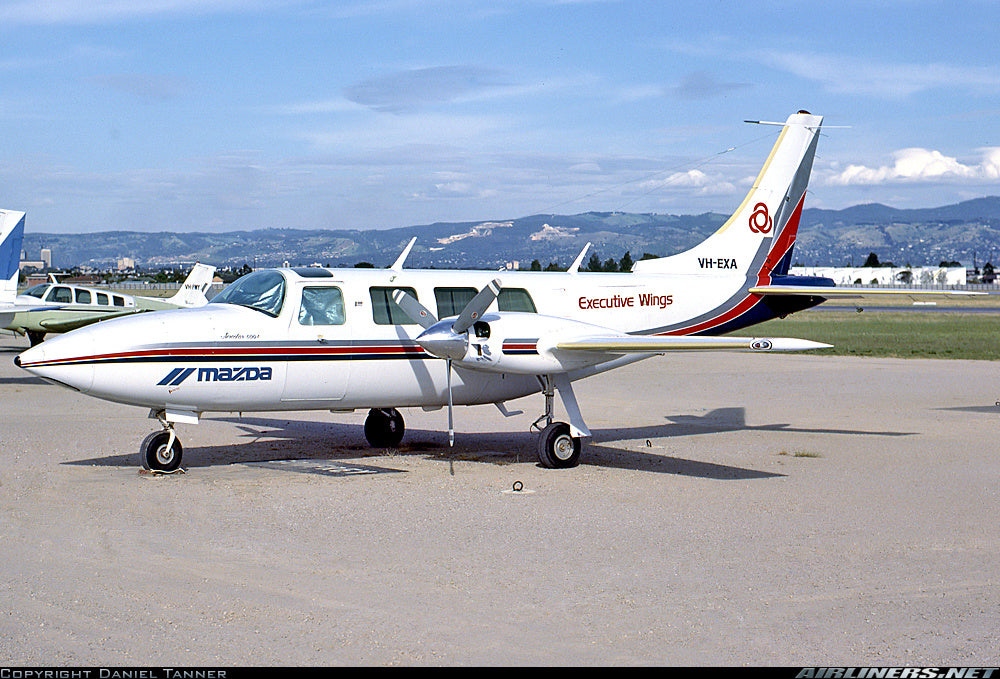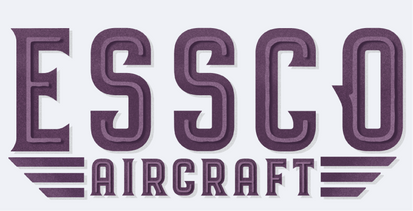
Number 29 in 100 in 100, The Piper Aerostar ✈️
Conceptualization:
The Piper Aerostar was conceived in the mid-1960s, a time when the general aviation market was flourishing, and there was a growing demand for high-performance, pressurized, twin-engine aircraft. This demand was driven by pilots and business operators seeking greater speed, range, and comfort. Ted R. Smith, a renowned aircraft designer known for his work on the Aero Commander, saw an opportunity to create an aircraft that could bridge the gap between existing light twins and larger, more expensive corporate aircraft. The market trends of the 1960s emphasized increased speed and performance, comfort through pressurization, and leveraging technological advancements in materials, avionics, and aerodynamics. Smith aimed to create the fastest, most efficient twin-engine piston aircraft available, resulting in an aircraft with sleek aerodynamics, a pressurized cabin, and impressive speed capabilities, making it a standout in the general aviation market.
Original Design:
The Piper Aerostar's design featured several standout elements tailored for high performance and versatility. It had a sleek, streamlined fuselage designed to minimize drag and maximize speed, with a mid-wing configuration providing stability and control. The aircraft's pressurized cabin allowed for high-altitude flights up to 25,000 feet, offering smoother rides and enhanced passenger comfort. Early prototypes featured Lycoming IO-320 and IO-360 engines (Models 320, 360, 400, 500, and 500P respectively). Once the 600 series rolled around, the engines were upgraded to Lycoming IO-540 and TIO-540 engines, providing significant power and reliability. The Aerostar 600, could reach speeds around 285-290 mph, making it one of the fastest twin-piston aircraft of its time. The aircraft's robust airframe, made primarily of aluminum, contributed to its durability and safety. It included advanced avionics that could be easily upgraded, a versatile interior, and high aspect ratio wings for excellent lift-to-drag ratio, fuel efficiency, and range. These design features made the Aerostar appealing for both private owners and small business operators looking for a high-performance, reliable aircraft.

Photo Credit: airliners.net - Thierry Deutsch
Principal Designer:
Ted R. Smith was the principal designer behind the Piper Aerostar. He began his career at the Douglas Aircraft Company, contributing to military and civilian aircraft designs during World War II. Smith later became the chief engineer and designer for the Aero Commander series, a twin-engine piston aircraft renowned for its performance and reliability. His work on the Aero Commander solidified his reputation as an innovative and skilled aircraft designer. Smith founded Ted Smith Aircraft Company to develop the Aerostar, aiming to create a high-performance, pressurized twin-engine aircraft. Smith passed suddenly in 1976. In 1978, Piper Aircraft acquired his company, and the Aerostar became part of Piper's lineup.
Production Run:
The Piper Aerostar was first produced in 1967 by Ted Smith Aircraft Company. The production run included various models such as the Aerostar 600, 601, 601P, 602P, and 700, each offering improvements in performance and capabilities. Over the entire production period, approximately 1,010 Aerostars were built. The production years were from 1967 to 1984, coinciding with Piper's acquisition and the introduction of new models. Production continued until 1984, when economic challenges in the general aviation market led to the decision to end production. Many units are still in operation today due to its robust design and continued support from aftermarket suppliers and dedicated maintenance communities.
Evolution:
The Piper Aerostar evolved significantly during its production run, with several key upgrades and modifications enhancing its performance and capabilities. The Aerostar 600 featured twin Lycoming IO-540 engines. The Aerostar 601, introduced in 1974, added turbocharged engines for improved high-altitude performance. In 1976, the Aerostar 601P introduced a pressurized cabin, allowing for more comfortable high-altitude flight. The Aerostar 602P, launched in the early 1980s, included further enhancements in pressurization, aerodynamics, and avionics. A more powerful variant, the Aerostar 700P, introduced in 1983, featured 350 hp engines and additional performance upgrades. Other improvements included enhancements to the wing structure and control surfaces, advanced avionics upgrades, better cabin comfort, structural reinforcements, and modifications to improve stall behavior and handling characteristics. These changes maintained the Aerostar's competitive edge and addressed the evolving needs of pilots and owners, ensuring its status as a high-performance aircraft throughout its production lifespan.

Photo Credit: airliners.net - ESAIR
Specifications:
General:
- Manufacturer: Ted Smith Aircraft Company / Piper Aircraft (after 1978)
- First Flight: 1967
- Number Built: Approximately 1,010 units
Dimensions:
- Length: 34 ft 4 in (10.46 m)
- Wingspan: 36 ft 8 in (11.18 m)
- Height: 10 ft 2 in (3.10 m)
- Wing Area: 180 sq ft (16.72 sq m)
Weights:
- Empty Weight: 4,080 lbs (1,851 kg) - 4,850 lbs (2,200 kg) depending on model
- Maximum Takeoff Weight: 6,000 lbs (2,722 kg) - 6,850 lbs (3,107 kg) depending on model
- Useful Load: Approximately 1,900 lbs (861 kg) - 2,200 lbs (998 kg)
Performance:
- Maximum Speed:
- Aerostar 600: 285 mph (460 km/h, 248 knots)
- Aerostar 601P: 285 mph (459 km/h, 248 knots)
- Aerostar 700: 285 knots (328 mph, 528 km/h)
- Cruise Speed:
- Aerostar 600: 261 mph (420 km/h, 227 knots)
- Aerostar 601P: 256 mph (412 km/h, 222 knots)
- Aerostar 700: 274 knots (315 mph, 507 km/h)
- Range:
- Aerostar 600: 1,200 miles (1,930 km)
- Aerostar 601P: 1,540 miles (2,479 km)
- Aerostar 700: 1,350 miles (2,172 km)
- Service Ceiling:
- Aerostar 600: 25,000 ft (7,620 m)
- Aerostar 601P: 25,000 ft (7,620 m)
- Aerostar 700: 25,000 ft (7,620 m)
- Rate of Climb:
- Aerostar 600: 1,650 ft/min (8.4 m/s)
- Aerostar 601P: 1,650 ft/min (8.4 m/s)
- Aerostar 700: 2,300 ft/min (11.7 m/s)
Powerplant:
- Engines:
- Aerostar 600: 2 × Lycoming IO-540-K1A5, 290 hp (216 kW) each
- Aerostar 601P: 2 × Lycoming TIO-540-U2A, 290 hp (216 kW) each
- Aerostar 700: 2 × Lycoming TIO-540-U2A, 350 hp (261 kW) each
Fuel Capacity:
- Usable Fuel:
- Aerostar 600: 137 US gallons (519 liters)
- Aerostar 601P: 138 US gallons (522 liters)
- Aerostar 700: 178 US gallons (674 liters)
Avionics:
- Standard Avionics: Varies by model and year, typically including GPS, autopilot, communication and navigation radios, transponder, and weather radar (in later models and upgrades).
Cabin:
- Seating Capacity: Up to 6 (1 pilot + 5 passengers)
- Cabin Width: 3 ft 6 in (1.07 m)
- Cabin Height: 4 ft (1.22 m)
Comparison to Other Aircraft in Its Class:
Beechcraft Baron 58:
- Cruise Speed: 200 knots (230 mph, 370 km/h)
- Range: 1,480 miles (2,380 km)
- Service Ceiling: 20,688 ft (6,308 m)
- Rate of Climb: 1,700 ft/min (8.6 m/s)
Cessna 340:
- Cruise Speed: 229 knots (264 mph, 424 km/h)
- Range: 1,260 miles (2,027 km)
- Service Ceiling: 29,800 ft (9,083 m)
- Rate of Climb: 1,650 ft/min (8.4 m/s)
Piper Navajo:
- Cruise Speed: 224 knots (257 mph, 415 km/h)
- Range: 1,041 miles (1,676 km)
- Service Ceiling: 26,000 ft (7,925 m)
- Rate of Climb: 1,500 ft/min (7.6 m/s)
Performance:
V-Speeds:
- V_NE (Never Exceed Speed): 285 knots (328 mph, 528 km/h)
- V_NO (Maximum Structural Cruising Speed): 215 knots (247 mph, 398 km/h)
- V_A (Maneuvering Speed): 152 knots (175 mph, 282 km/h)
- V_FE (Maximum Flap Extended Speed):
- Approach Flaps (10°): 174 knots (200 mph, 322 km/h)
- Full Flaps (40°): 130 knots (150 mph, 241 km/h)
- V_LE (Maximum Landing Gear Extended Speed): 174 knots (200 mph, 322 km/h)
- V_LO (Maximum Landing Gear Operating Speed):
- Extension: 174 knots (200 mph, 322 km/h)
- Retraction: 140 knots (161 mph, 259 km/h)
- V_S (Stall Speed, Clean Configuration): 75 knots (86 mph, 139 km/h)
- V_SO (Stall Speed, Landing Configuration): 67 knots (77 mph, 124 km/h)
- V_X (Best Angle of Climb Speed): 95 knots (109 mph, 176 km/h)
- V_Y (Best Rate of Climb Speed): 120 knots (138 mph, 222 km/h)
G-Load Limitations:
- Positive G Load: +3.8g (normal category)
- Negative G Load: -1.52g (normal category)
Approved Maneuvers:
- Normal Flight Operations: The Aerostar is certified for normal flight operations, which include standard maneuvers such as turns, climbs, descents, and stalls.
- Steep Turns: Approved within the limits of V_A and normal category G-load limitations.
- Lazy Eights: Permitted within the normal flight envelope.
- Chandelles: Allowed within specified performance parameters.
- Standard Instrument Maneuvers: Approved for instrument flight procedures including holding patterns, procedure turns, and approaches.

Photo Credit: airliners.net - Wolfgang Hut
Safety Record:
The Piper Aerostar generally has a good safety record, but like any high-performance aircraft, it has experienced incidents related to pilot proficiency, maintenance quality, and engine management. The aircraft's high performance and speed require experienced pilots, and inadequate maintenance can lead to mechanical failures. Common safety concerns include engine failures, issues with the pressurization system, and landing gear problems. Notable incidents often involve engine failures on takeoff, controlled flight into terrain (CFIT) in poor weather conditions, and landing gear failures. Compared to similar aircraft like the Beechcraft Baron 58 and Cessna 340, the Aerostar's safety record is comparable, with emphasis on pilot proficiency and maintenance. Safety improvements for the Aerostar include advanced training for pilots, rigorous maintenance, and adherence to operating guidelines. The Aerostar's safety concerns are typical for its class, and with proper training and maintenance, it remains a safe and reliable aircraft.
Acquisition Cost:
The original acquisition cost for the Piper Aerostar in 1967 was approximately $78,000. Today, the value of an Aerostar varies based on model, year, condition, and upgrades. High-end models, well-maintained and upgraded, can cost between $250,000 and $370,000. Most Aerostars on the market fall within a price range of $99,000 to $250,000. Factors influencing current prices include maintenance history, avionics and upgrades, airframe condition, and usage. Compared to other twin-engine piston aircraft like the Beechcraft Baron and Cessna 340, the Aerostar's market values are competitive. Its high performance, particularly in speed and pressurization, often justifies its cost relative to peers. The Aerostar remains sought after for its speed, performance, and versatility, with its current values reflecting its enduring quality and desirability among aviation enthusiasts and pilots.

Photo Credit: airliners.net - Thierry Deutsch
Bibliography:
National Transportation Safety Board (NTSB)
Aircraft Owners and Pilots Association (AOPA)
Essco Links:
Piper Navajo
